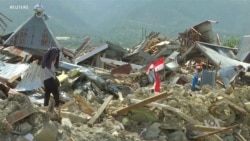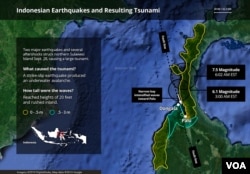Indonesia's Central Sulawesi province has begun to take its first steps toward recovery, nearly a week after parts of it were devastated by an earthquake and massive tsunami that killed more than 1,500 people.
Electricity has been restored to some parts of Palu, the city of just over 370,000 residents that endured the brunt of the disaster. Shops have reopened, a major phone network is back in operation, and a small number of commercial flights are expected to resume flying in and out of the city's wrecked airport.
WATCH: Flags Mark Sites of Trapped Bodies in Indonesia Quake
As emergency relief slowly arrives in Sulawesi, authorities have begun stepping up security to end the sporadic looting by residents desperate for food and clean water.
The official death toll inched up to 1,558 as of late Thursday, with 70,000 others displaced.
Indonesia's President Joko Wido visited affected areas for a second time Thursday to assess the damage.
The 7.5 magnitude quake last Friday triggered a huge tsunami that turned scores of houses and buildings in Palu into huge mounds of debris and washed away some of the island's roads and bridges, cutting off at least three districts near Palu with a combined population of over 1 million people.
Indonesia and its 18,000 islands are located along the Pacific Ocean's "Ring of Fire" and are frequently struck by earthquakes, volcanoes and tsunami activity.
A 9.1-magnitude quake in 2004 off Sumatra and subsequent tsunami killed about 230,000 people in 14 Pacific countries, with about half of those deaths occurring in Indonesia.
VOA’s Indonesian service contributed to this report.













